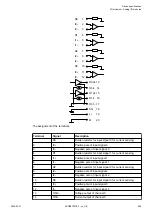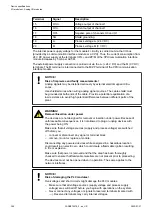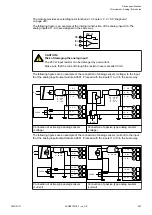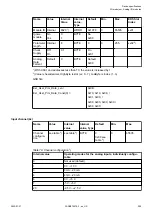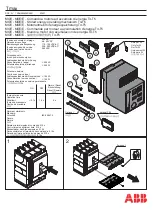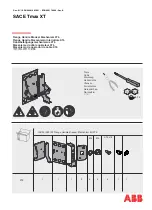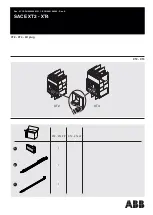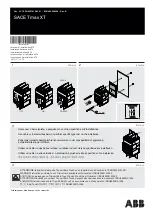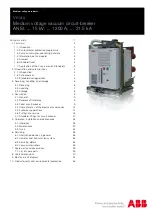
Connections
For a detailed description of the mounting, disassembly and connection of the
module, please refer to the System Assembly, Construction and Connection
Chapter 2.6 “AC500 (Standard)” on page 971.
The modules are plugged on an I/O terminal unit
Chapter 1.5.2 “TU515, TU516, TU541 and
TU542 for I/O modules” on page 126
. Properly position the modules and press until they lock
in place. The terminal units are mounted on a DIN rail or with 2 screws plus the additional
accessory for wall mounting (TA526
Chapter 1.8.2.6 “TA526 - Wall mounting accessory”
The connection of the I/O channels is carried out using the 40 terminals of the I/O terminal unit.
I/O modules can be replaced without re-wiring the terminal units.
The terminals 1.8, 2.8, 3.8 and 4.8 as well as 1.9, 2.9, 3.9 and 4.9 are electrically intercon-
nected within the I/O terminal units and always have the same assignment, independent of the
inserted module:
Terminals 1.8, 2.8, 3.8 and 4.8: process voltage UP = +24 V DC
Terminals 1.9, 2.9, 3.9 and 4.9: process voltage ZP = 0 V DC
The assignment of the other terminals:
Terminals
Signal
Description
1.0 to 1.7
Unused
Unused
2.0 to 2.7
C0- to C7-
Negative poles of the 8 analog
inputs/outputs
3.0 to 3.7
C0+ to C7+
Positive poles of the analog
inputs/outputs
4.0 to 4.7
Unused
Unused
The negative poles of the analog inputs are connected to each other to form an
"Analog Ground" signal for the module.
The negative poles of the analog outputs are connected to each other to form
an "Analog Ground" signal for the module.
There is no galvanic isolation between the analog circuitry and ZP/UP. There-
fore, the analog sensors must be galvanically isolated in order to avoid loops via
the ground potential or the supply voltage.
Because of their common reference potential, analog current inputs cannot
be circuited in series, neither within the module nor with channels of other
modules.
Device specifications
I/O modules > Analog I/O modules
2022/01/31
3ADR010278, 3, en_US
409

